Jaw Surgery Turkey
Jaw surgeries are referred to by a broad term and are also known as Orthognathic Surgery or maxillofacial surgery. Various surgeries can be performed depending on the needs of the jaw. These include:
- Chin tip filing
- Jawline surgery
- Chin augmentation
- Jaw Reduction
- Double jaw surgery
- Advancing or retracting the lower jaw
- Advancing or retracting the upper jaw
- Sliding Genioplasty surgery
Jaw surgery All inclusive package
- Accommodation at a boutique hotel with breakfast
- Airport pick-up and return
- City transfers
- Translator with a good level of English
- Doctor and anesthesiologist’s visits
- Medical control
- Esteport Clinic Assistance
Jaw Surgery Cost 2024
Jaw surgery Turkey price start at 4000 Euros. The price may vary depending on the type of surgery to be performed. The price is valid for the year 2024. Payments can be made via credit or debit cards (Visa and MasterCard) or in cash. Jaw surgery is also available with the option of installment plans on your credit card.
Operation Report Card.
| Operation location: | Hospital |
| Type of anesthesia: | General |
| Duration of surgery: | 1.5 – 3 hours (Varies depending on the type of operation) |
| Length of stay in Turkey: | 4 – 7 days |
| Surgical scar: | Scarless |
| How long it lasts: | Lifetime |
| First shower: | 3 – 4 days later |
| Full recovery: | 30 – 45 days |
| Diet: | Same day, liquid and soft foods for 1 week |
| Hospital stay duration: | 1 night |
| Return to work: | 7 – 14 days |
| Pain or discomfort: | Mild pain for 7 days |
| Side effects: | Swelling, redness, headache for 3-4 days, edema |
| Medical materials: | Medpor implant, titanium plate, screw |
| Companion: | Necessary for the first day |
Jaw Surgery Vlog Video
Chin implant Turkey
Chin Implant Procedure:
We apply a chin implant to patients who have a recessed chin or chin deficiency. Either the patient’s own bone is used for chin extension surgery, or implants made of bone-like materials are placed. The procedure is done by adding to the tip of the chin bone.
Steps:
- The patient is given general anesthesia.
- An implant is attached to the chin with titanium screws.
- The chin is designed and calibrated. Necessary adjustments are made to the bone or implant to achieve symmetry. Once symmetry is achieved, two screws are inserted.
- The incisions inside the mouth are closed, completing the surgery. The surgery takes about 30 minutes.
- Patients are usually discharged on the same day.
- Swelling and edema will subside within 7-10 days.
Post-Operative Care:
- For 2 days, consume only liquid foods.
- After the 3rd day, transition to soft foods.
- You can return to normal eating habits after 2 weeks.
- Rinse and clean your mouth after everything you eat or drink.
- Use medicated mouthwash 4-5 times a day.
- You can start brushing your teeth from the 2nd day.
- Avoid touching the stitches with your tongue.
- Medications (pain relievers and antibiotics) should be taken for about 10 days.
- There will be temporary numbness in the lower lip, but don’t worry; it will go away.
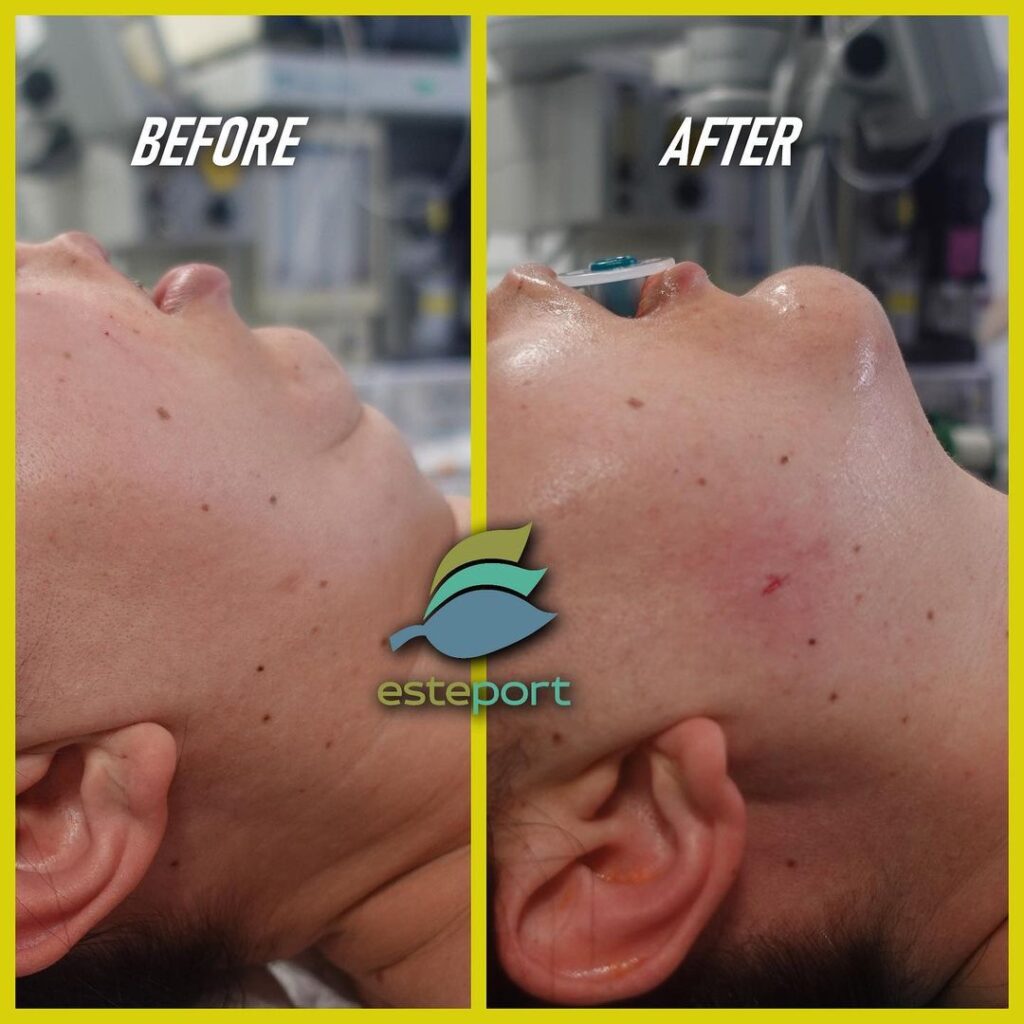
Chin implant Turkey cost is around 4500 Euros. If the patient’s own bone is used, the price may vary, and it may also differ if additional implants are required. For precise information, you can contact us via our WhatsApp lines.

Double jaw surgery Turkey
Double jaw surgery refers to the simultaneous surgery of both the lower and upper jaws. It is also referred to as “bimaxillary osteotomy.” Depending on the need, the jaw can be moved forward or backward, as well as downwards or upwards. The bone is cut, and the jawbone is shaped as needed to complete the surgery.
This procedure can be done to perfect the bite alignment of the teeth or to achieve a more aesthetically pleasing facial skeleton.
Double Jaw Surgery Procedure:
- The surgery takes approximately 2 to 3.5 hours.
- It is performed entirely through the inside of the mouth.
- There are no visible scars after the surgery.
- After the surgery, the teeth are not wired together.
- The head will not be completely bandaged. After surgery, you will be able to open and close your mouth comfortably.
- You will be able to speak comfortably.
Double jaw surgery recovery
- Your teeth will not be wired together for weeks.
- You can start consuming liquid foods 3 hours after the surgery. (We don’t want food particles to accumulate along the suture line.)
- After the 3rd day, you can transition to soft foods.
- Two weeks after the surgery, you can eat whatever you want.
- The final result of the surgery is seen in 1 to 1.5 months.
- The complete outcome may take 4-6 months.
Jawline surgery Turkey
If your jawline are not well-defined, your chin is positioned too far back, and you desire a more masculine appearance, you might consider this surgery.
- Jawline filler (dermal fillers jawline): Fillers can be applied to make the jawline contouring more prominent. The longevity of the filler is approximately 1.5 years. Since hyaluronic acid is used, the fillers will naturally dissolve over time. If you decide to remove the filler, there are materials that can dissolve it.
- Jaw filler men : Jawline filler can be applied to men. Not only filler but also implants and jaw rasping are also possible for our male patients.
- Jawline implant: By placing implants in the jaw corners, a more defined jawline can be achieved. Jawline augmentation procedure takes an average of 1 hour. Jawline surgeries can also be performed for men. This surgery provides a permanent result for a lifetime. However, if you regret it and wish to remove the implant, you will need to undergo another surgery.
- V shape jawline: This procedure involves shaping the lower jawline into a “V” shape. It requires bone cuts to shorten the vertical length of the chin. Sometimes, the chewing muscle needs to be thinned, and in some cases, bone shaving is necessary. Occasionally, an implant is needed to more clearly define the “V” shape. V shaped jawline female; can be applied to both men and women.
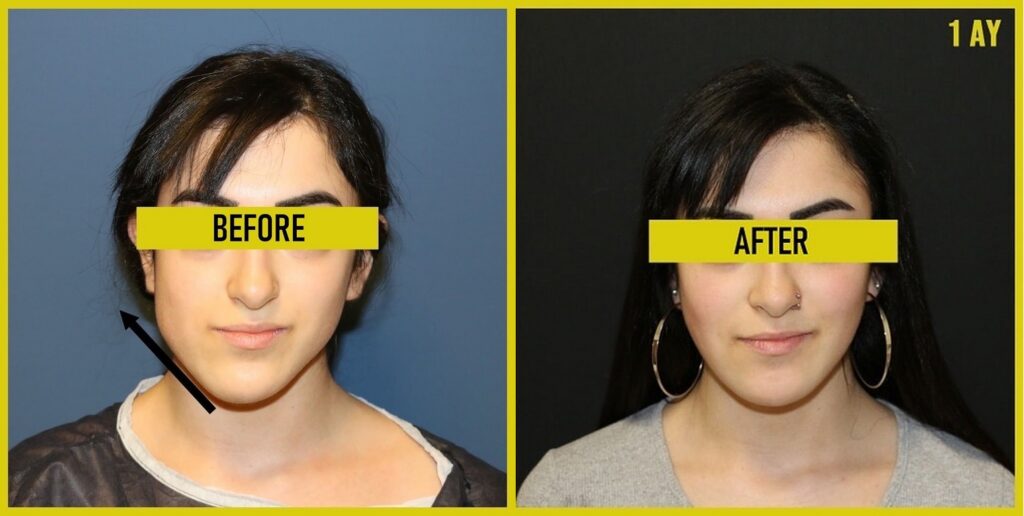
To determine the appropriate technique for the surgery, an initial consultation is required. We will listen to your needs, fully understand your desires, conduct a physical examination, review your X-rays, and together, we will choose the most suitable procedure for your face.
Jawline surgery cost in Turkey starts from 4500 euros. The price may vary depending on the surgical technique.
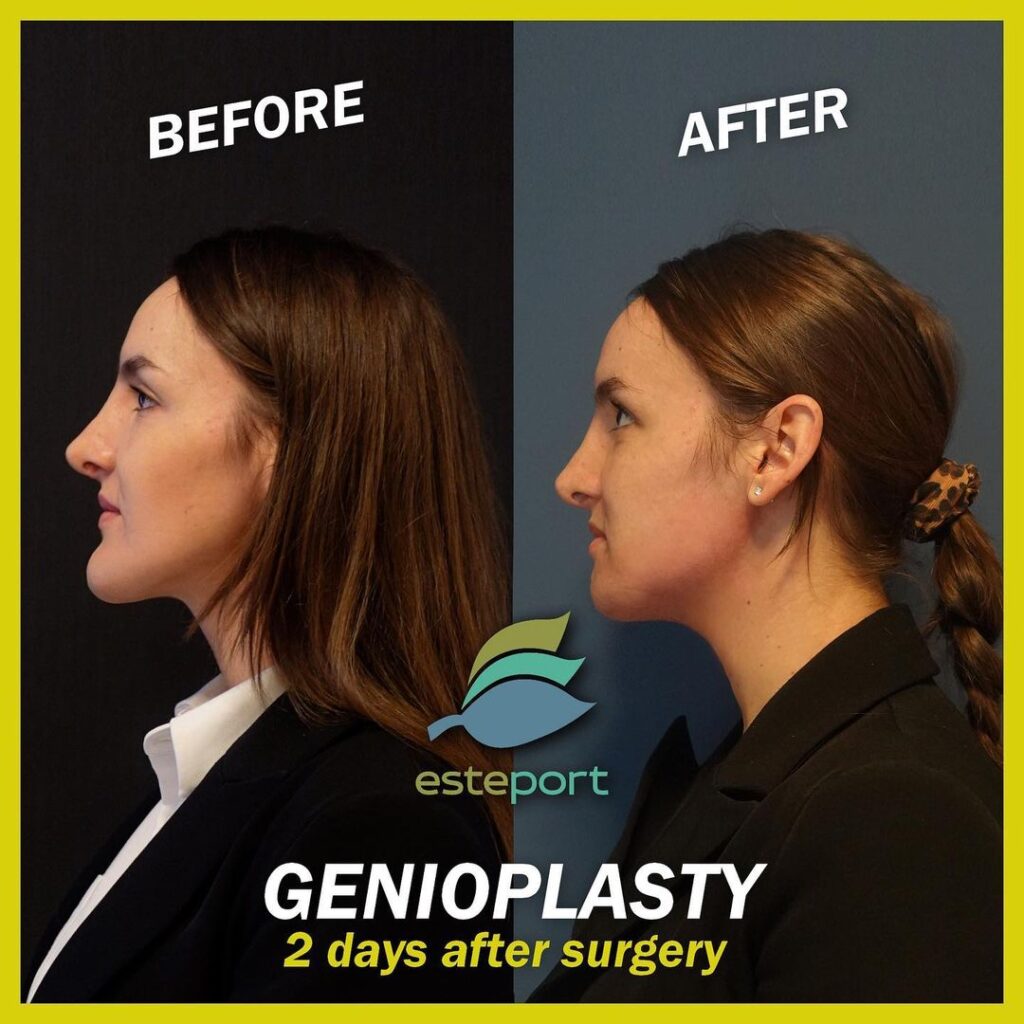
Genioplasty in Turkey
If the chin is not very long, it can be shortened simply by shaving the bone. However, if the chin is quite long, we can shorten the chin tip by 1-1.5 cm by removing a horizontal piece of bone from the tip. The surgery is performed inside the mouth, so there will be no visible surgical scars.
We complete the shaving process while protecting the nerve inside the mouth that allows us to feel the lower lip. Afterward, the incisions are closed with stitches. The surgery takes about 30 minutes, and you can be discharged on the same day.
The chin can also be thinned horizontally by removing a piece of bone, which is called chin reduction surgery. Some patients may only need shaving.
Attention: There should be no issues with the contact between your upper and lower teeth. In other words, there should be no bite or closure problems. Your lower and upper jaws should not be too far forward or backward. If there are no issues with the closure of the chin, you can comfortably undergo sliding genioplasty surgery.
Overbite surgery Turkey
Upper jaw surgery is usually performed for the following reasons:
- The upper jaw being positioned too far back
- The upper jaw being positioned too far forward
- A narrow area where the upper teeth are located
- Excessive visibility of the gums when the patient smiles (Gummy Smile aesthetics)
- Open bite deformity (Misalignment of the upper and lower teeth)
- Issues with facial ovality and flatness
We can move the upper jaw bone in the desired direction—upward, backward, forward, or sideways—according to the needs. The surgery is performed under general anesthesia and takes between 1 hour and 15 minutes to 1 hour and 30 minutes. You will be discharged the day after the surgery. Patients experience minimal swelling, bruising, and edema after the surgery. Swelling and edema will subside within 5-7 days, allowing you to return to your normal social life.
Underbite surgery Turkey
Lower jaw surgery is typically performed for the following reasons:
- The lower jaw being positioned too far forward, backward, or sideways
- To make the jawline more defined
- Situations where the chin is too long
- Problems with teeth not aligning properly
- The need for smile design
- Extending the chin by placing an implant
Sometimes, orthodontic treatment, such as braces, may be needed before lower jaw surgery. We will decide on this after the examination. In some cases, surgery may be performed first, followed by orthodontic treatment. Our clinic is located in Istanbul, Turkey. A physical examination before surgery is recommended.
Jaw men surgery Turkey
If your face doesn’t match your jaw for various reasons, you may consider jaw surgery. For men, jaw surgeries are typically performed for the following reasons:
- very large male chin
- A very small male chin
- Irregularities in the male jawline
- Chewing and bite disorders
- Misalignment between the upper and lower teeth
In Turkey, “jawline men surgery” is also commonly performed. Our examinations are conducted at our clinic in Istanbul. The post-surgery care and recovery period are remarkably short. The jaw teeth are never wired together. On average, you will be able to eat whatever you like after 15 days. A stay of 5-7 days in Istanbul is sufficient.
Male jawline filler Turkey
In Turkey, the spectrum of jaw filler applications for men is quite broad. It is often used, particularly to define the jawline. Since these are pre-made fillers, they last for about 1.5 years. Filler can be applied to almost every part of the jaw. We can temporarily alter the shape of the jaw.
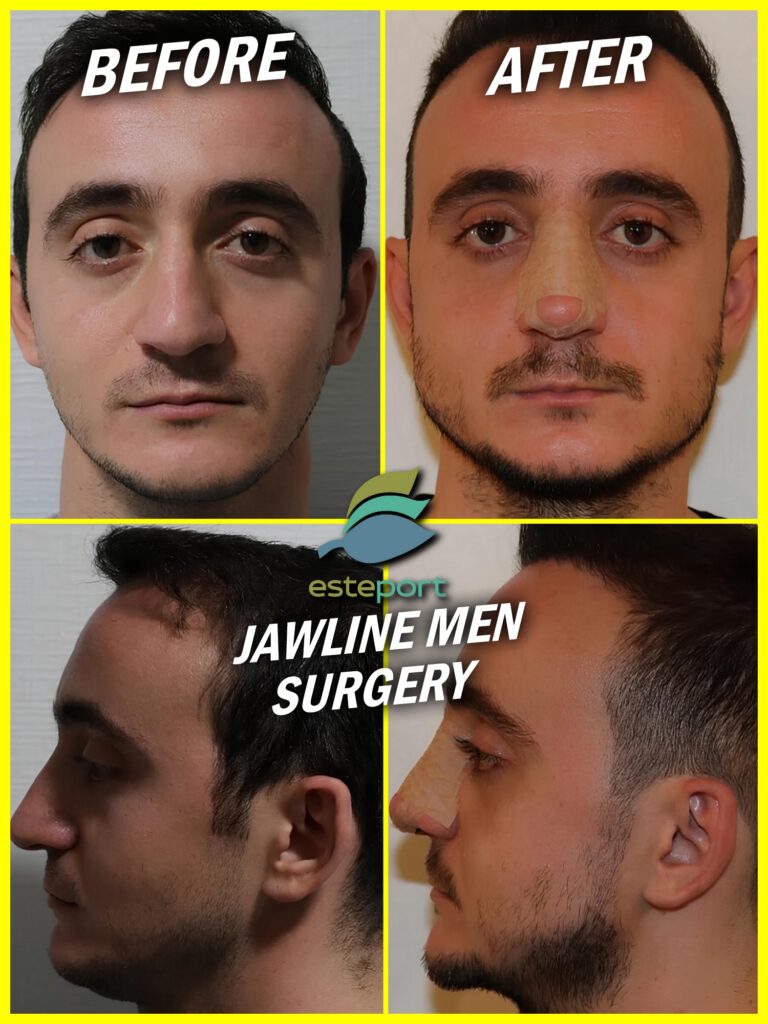
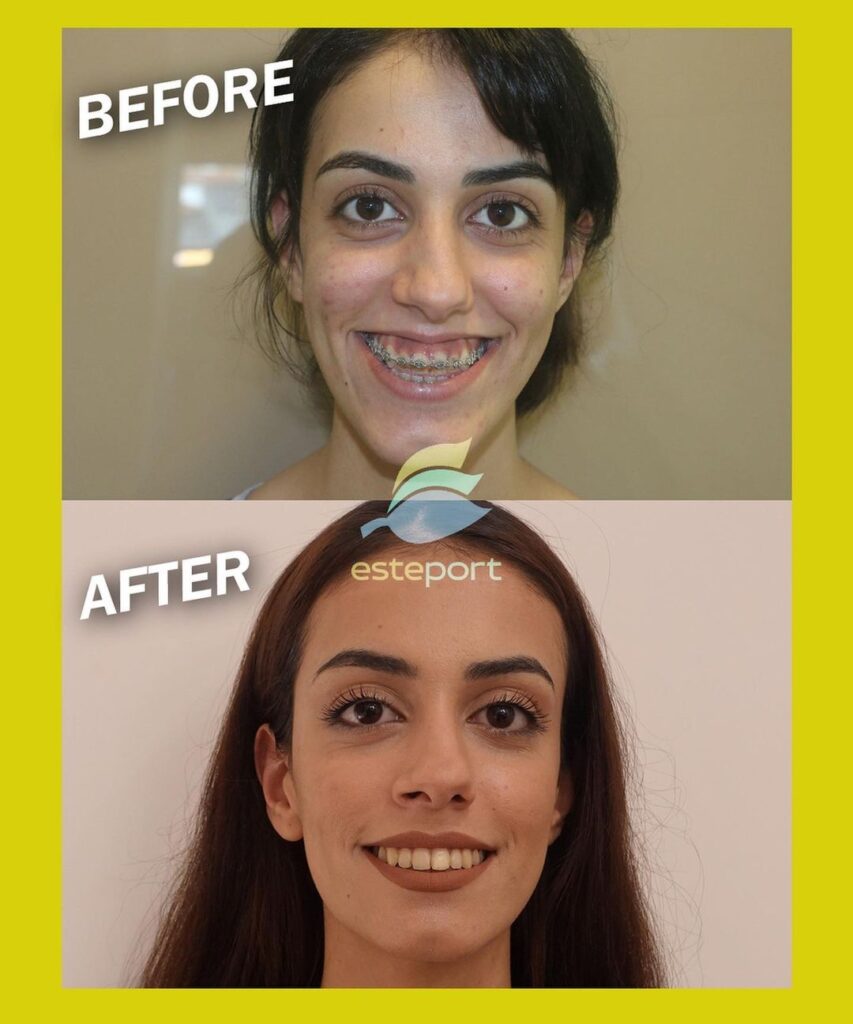
What is Mentoplasty Surgery? Why is it Done?
Mentoplasty is a comprehensive set of surgeries in the field of facial asymmetry surgery. It includes essential procedures like rhinoplasty and jaw surgery, which are performed to shape the face. The process involves repositioning the chin in three-dimensional space (i.e., moving it left or right, up or down, forward or backward) to reshape the face. Sometimes, intervention on the cheekbone may also be necessary.
Why is Mentoplasty Performed?
- To reposition the maxillary and mandibular bones
- To correct abnormalities in chin bone development, such as facial asymmetry or congenital agenesis of the chin
- To harmonize facial features
- As part of craniofacial reconstruction after facial trauma or cancer surgery
- During the gender transition process
Mentoplasty surgery in Turkey is frequently performed by Dr. Ali Mezdeği. The operation takes about an hour. It transforms the face’s aura and corrects aesthetic imperfections. If you need facial surgery, we recommend visiting Esteport Clinic in Istanbul.
Best jaw surgeons in Turkey
Dr. Ali Mezdeği has a special interest in jaw surgery. Unlike his fellow plastic surgeons, he does not find this area challenging. He has performed thousands of jaw surgeries. His specialization thesis involved experimental and clinical studies on Mandibular Distraction Osteogenesis.
Academic Programs:
- June 18-20, 2007: 11th National Congress of the Aesthetic Plastic Surgery Association and Facial Aesthetic Surgery Course.
- May 3, 2007: Planning in Orthognathic Surgery at Hacettepe University Faculty of Medicine.
- September 21-25, 2004: 26th Congress.
- December 25, 2003: ‘Non-Invasive Aesthetic Procedures on the Face’ Panel – ISTANBUL.
- November 6-7, 2003: ‘Maxillofacial Surgery and Distraction’ Course – ANKARA.
- October 18-20, 2002: Yeditepe University Faculty of Dentistry, Symposium on Current and Advanced Perspectives in Oral and Maxillofacial Surgery – ISTANBUL.
- May 3-4, 2002: GATA Department of Plastic and Reconstructive Surgery Maxillofacial Surgery Workshop and Course, ANKARA.
Thesis Work:
The clinical thesis titled ‘Mandibular Distraction Osteogenesis’ was presented in June 2003 and was deemed sufficient by the thesis jury.
Op. Dr. Ali Mezdeği is also a TMJ surgeon. He performs jaw surgeries in collaboration with orthodontists. In cases where orthodontic treatment is necessary, he works together with orthodontic specialists. He also has specialized work in the field of Hollywood jaw surgery.
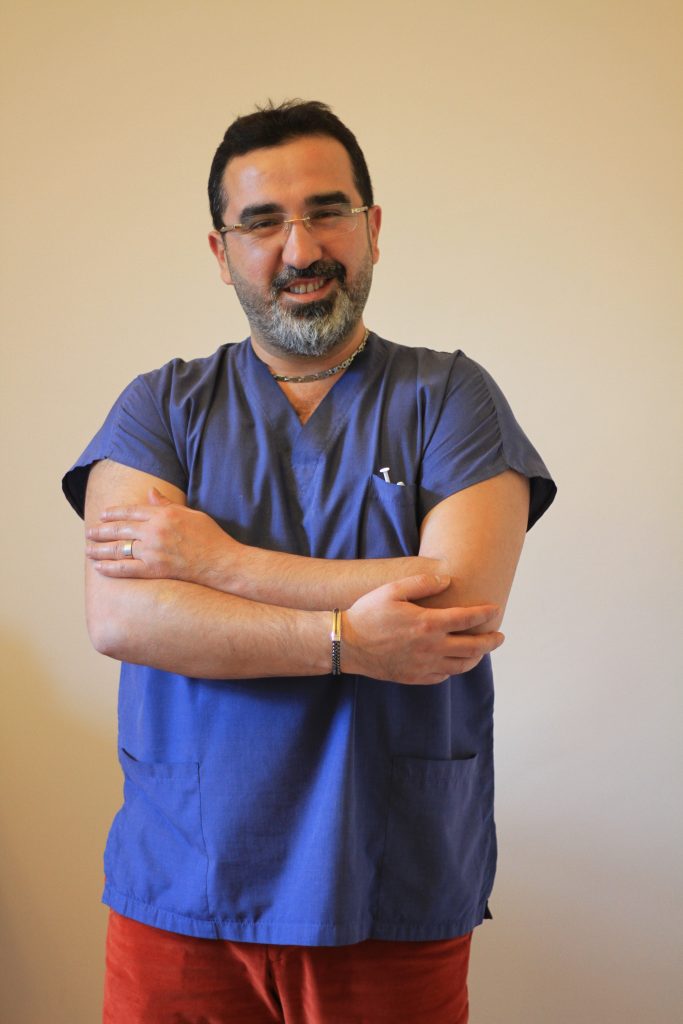
FAQ
Orthognathic surgery is not covered by private insurance or government institutions in Turkey. As with any plastic surgery, neither government nor private health insurance is accepted at our clinic. The full payment must be made by the patient.
Update : 25.09.2024



